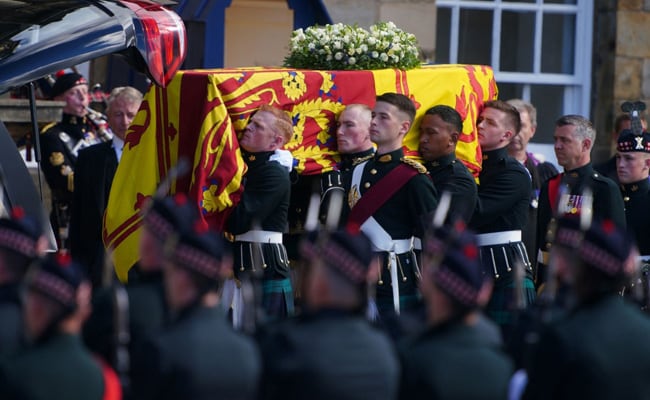Queen’s coffin Elizabeth II, which will be located in the state in London for four days this weekend before the funeral next Monday, was reported to be made more than three decades ago.
The coffin will be closed on the lifted platform known as the Catafalque in the Westminster Hall-the oldest part of the parliamentary plantation for centuries on Wednesday, after lying down in Edinburgh for a day from the final Monday.
Following are more details about the British King Coffin:
English oak and lead
The queen coffin was made at least 32 years ago from Oak British, which is increasingly rare lately with most wooden coffins now made from Oak America, The Times reported Monday.
It was coated with tin, the royal tradition to help preserve the corpse longer after its burial in the basement – on this occasion in the King George VI memorial chapel in the St. George chapel in Windsor, west of London.
Lead is said to make an airtight coffin, helping to stop the moisture in but makes it much heavier. The queen’s coffin needs eight supporters to move it.
That matches what was made for the husband of the late Ratu, Prince Philip, who died last year and was buried in the basement where he would soon be buried beside him.
Leverton & Sons, London administrator for the royal family since 1991, told The Times they inherited the coffin at that time and did not realize that made them before that.
“It is made from British Oak, which is very difficult to obtain,” Andrew Leverton, who runs the company, was added to the newspaper.
“I don’t think we can use American oak for coffin now. It will be too expensive.”
Unique features
The coffin has been specifically designed to hold valuable fitmen safely on the lid.
In the lies in the state and funeral, it will include the crown of the imperial country, orb and royal sticks, representing various aspects of the power of the sovereign.
Meanwhile, the brass grip in the coffin was also uniquely designed for the royal coffin, with a company in the Birmingham central English city responsible for them, according to the Times.
“This is not something you can make in a day,” Leverton said.
Final journey
Queen Elizabeth II first coffin appeared on Sunday, covered with a standard Scottish kingdom and Heather’s white wreath, Dahlia and sweet peas from the balmoral plantation park where he died Thursday.
It was resting last night on Sunday at the Holyroodhouse palace in the Scottish capital Edinburgh.
On Monday, he traveled with a corpse – followed by a procession including King Charles III and other senior nobles – to the Cathedral of St Giles in Royal Miles, where he would remain 24 hours.
This will then travel by Royal Air Force to London, where he will sit in the Buckingham Palace before being transferred to the Westminster Hall on Wednesday.
